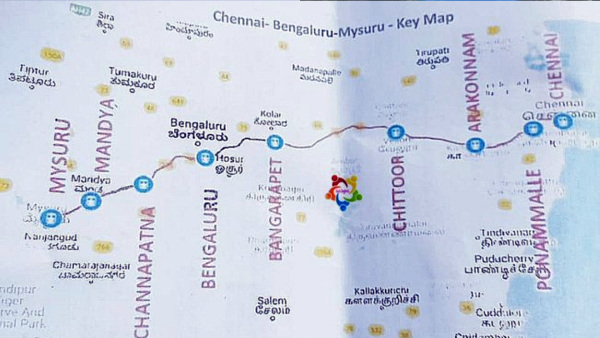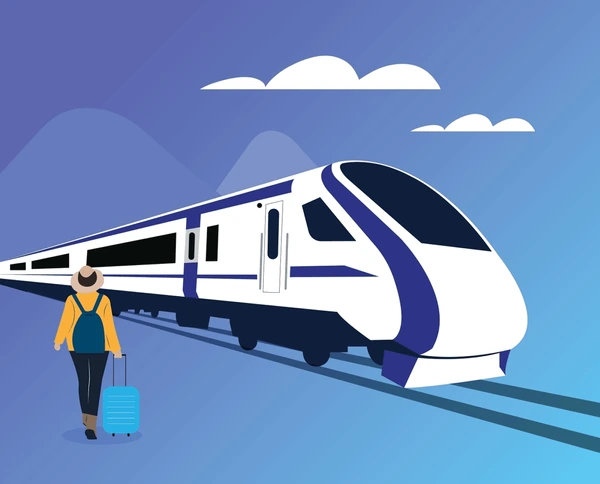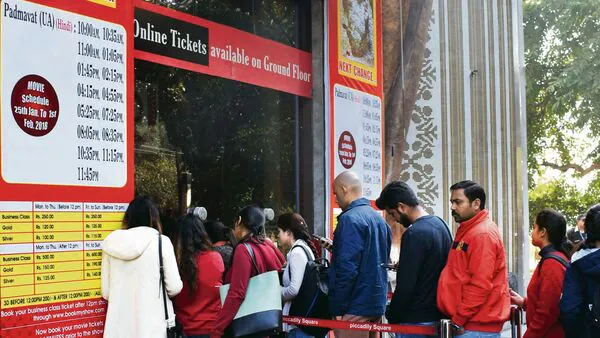India’s rail infrastructure is undergoing a revolution, and the proposed Mysore to Chennai Bullet Train is poised to redefine how South India travels. As part of the country’s ambitious plan to develop high-speed corridors, this route will connect Mysore, Bangalore, and Chennai — three of South India’s most vital cities — through a cutting-edge bullet train network.
From easing congestion on existing routes to drastically cutting travel time, the project promises a blend of efficiency, sustainability, and modern engineering marvels. With the success of the Mumbai-Ahmedabad bullet train paving the way, this corridor is now under active evaluation, with surveys, land acquisition, and feasibility studies moving forward rapidly.
This comprehensive blog explores every aspect of the project — from the Mysore to Chennai bullet train route map and timings to ticket prices, survey maps, and the latest land acquisition updates.
What Is the Mysore to Chennai Bullet Train Project?
The Mysore to Chennai Bullet Train is envisioned as part of the Southern high-speed rail corridor proposed by the National High-Speed Rail Corporation Limited (NHSRCL). It will link Mysore–Bangalore–Chennai, spanning approximately 435 kilometers, allowing trains to reach speeds of up to 320 km/h.
The project will likely follow Japan’s Shinkansen model, known for its exceptional safety, punctuality, and energy efficiency. The feasibility study has already been completed, and preliminary surveys for route alignment and environmental assessment are ongoing.
What Is the Proposed Mysore to Chennai Bullet Train Route Map?

The Mysore to Chennai bullet train route map shows a carefully designed alignment connecting key urban and semi-urban areas across Karnataka and Tamil Nadu.
Proposed major stations along the corridor include:
- Mysore Junction (starting point)
- Mandya
- Bangalore (major hub and interchange point)
- Krishnagiri
- Vellore
- Sriperumbudur
- Chennai (Terminus at Perambur or Chengalpattu)
This route ensures both connectivity and economic stimulation in smaller towns between the two major cities.
For those exploring visual aids, the Chennai to Mysore bullet train survey map online provides insights into possible alignments, elevation levels, and proposed station zones.
How Does the Bangalore to Mysore Bullet Train Map Fit Into This Corridor?
The Bangalore to Mysore bullet train map represents the initial segment of the high-speed corridor. Covering about 140 km, this stretch will serve as a testing ground for operational feasibility before the full route extends to Chennai.
This segment is particularly crucial since it connects two economic centers and one of India’s most congested road routes, the Mysore-Bangalore Highway. The new expressway has already shortened travel time to 90 minutes by car, but the bullet train aims to reduce this further to just 25 minutes.
What Is the Current Status and Land Acquisition Update Today?

As of the latest Chennai-Mysore bullet train land acquisition update today, the authorities are finalizing route alignments and station locations before large-scale land purchases begin.
The land acquisition process will involve both private and government-owned plots across Karnataka and Tamil Nadu. Officials have clarified that the approach will be based on fair compensation and community consultation.
The Chennai-Mysore bullet train land acquisition update today also highlights that a detailed socio-economic impact study is underway to minimize displacement and ensure smooth project execution.
What Is the Mysore to Chennai Bullet Train Plan and Timeline?

The Mysore to Chennai bullet train plan envisions construction beginning in phased segments, with Bangalore–Chennai likely being prioritized due to higher passenger density.
Estimated project timeline:
- Feasibility and design phase: Completed
- Land survey and environmental clearance: In progress
- Land acquisition and tendering: Expected to start by mid-2026
- Construction commencement: Likely by 2027
- Trial runs and safety certifications: By 2032
- Expected operational date: Around 2033-2034
Once operational, it is expected to revolutionize travel across South India, slashing the total travel time from nearly 7 hours by car or train to just 2 hours and 30 minutes.
What Are the Mysore to Chennai Bullet Train Timings Expected to Be?

While the Mysore to Chennai bullet train timings are yet to be officially released, initial plans suggest multiple departures throughout the day — with peak-hour schedules tailored for office commuters and business travelers.
Tentative plan:
- First train: Around 6:00 AM from both cities
- Last train: Around 10:00 PM
- Frequency: Every 60–90 minutes during peak hours
With a travel time of approximately 2.5 hours, this will easily become the Chennai to Mysore fastest train upon launch.
What Will Be the Chennai to Mysore Bullet Train Ticket Price?

The Chennai to Mysore bullet train ticket price is expected to be competitive yet premium compared to regular express trains.
Estimated ticket fares (one-way):
- Standard Class: ₹2,800 – ₹3,200
- Executive Class: ₹5,500 – ₹6,000
The pricing strategy will balance affordability for daily travelers and comfort for business-class passengers. Discounts and dynamic pricing models similar to airlines may also be introduced.
How Does This Compare with the Chennai to Mysore Fastest Train at Present?
Currently, the Chennai to Mysore fastest train is the Shatabdi Express, which takes around 6 hours and 30 minutes.
In contrast, the bullet train aims to reduce travel time by over 60%, offering superior comfort, noise insulation, Wi-Fi, and real-time train tracking. This technological leap could shift a large segment of air and road travelers toward high-speed rail.
Why Is This Project Important for Southern India?
The Mysore-Bangalore-Chennai bullet train corridor will not only revolutionize transportation but also stimulate regional development.
Key benefits include:
- Economic integration between Karnataka and Tamil Nadu
- Boost to tourism in Mysore and cultural towns en route
- Reduced carbon footprint through energy-efficient travel
- Faster logistics and movement of professionals
- Job creation during construction and operation
How Can Passengers Access the Chennai to Mysore Bullet Train Survey Map Online?
The Chennai to Mysore bullet train survey map online is periodically updated by the National High-Speed Rail Corporation and the Ministry of Railways. It highlights station placement, elevation details, and land boundaries for each district.
Passengers and local residents can access this to understand whether their areas fall under the proposed alignment or station zones. This transparency aims to prevent misinformation and assist property owners in future planning.
Conclusion: A New Era of Connectivity Between Mysore and Chennai
The Mysore to Chennai Bullet Train isn’t just a transportation project—it’s a symbol of India’s journey toward modernization and sustainability. With its promise of ultra-fast connectivity, reduced travel time, and world-class infrastructure, it’s set to transform how South India travels and does business.
The ongoing surveys, route mapping, and land acquisition progress signal that this vision is gradually taking shape. Once operational, it will position India alongside nations like Japan and France in the high-speed rail domain.
At Housiey, we believe infrastructure growth fuels real estate and lifestyle transformation. As connectivity improves, property values and quality of life rise simultaneously.
If you found this blog insightful, don’t miss our detailed feature on “Yellow Line Metro Mumbai” — an in-depth look at another revolutionary transport project shaping India’s future.
FAQs
India’s rail infrastructure is undergoing a revolution, and the proposed Mysore to Chennai Bullet Train is poised to redefine how South India travels. As part of the country’s ambitious plan to develop high-speed corridors, this route will connect Mysore, Bangalore, and Chennai — three of South India’s most vital cities — through a cutting-edge bullet train network.
From easing congestion on existing routes to drastically cutting travel time, the project promises a blend of efficiency, sustainability, and modern engineering marvels. With the success of the Mumbai-Ahmedabad bullet train paving the way, this corridor is now under active evaluation, with surveys, land acquisition, and feasibility studies moving forward rapidly.
This comprehensive blog explores every aspect of the project — from the Mysore to Chennai bullet train route map and timings to ticket prices, survey maps, and the latest land acquisition updates.
What Is the Mysore to Chennai Bullet Train Project?
The Mysore to Chennai Bullet Train is envisioned as part of the Southern high-speed rail corridor proposed by the National High-Speed Rail Corporation Limited (NHSRCL). It will link Mysore–Bangalore–Chennai, spanning approximately 435 kilometers, allowing trains to reach speeds of up to 320 km/h.
The project will likely follow Japan’s Shinkansen model, known for its exceptional safety, punctuality, and energy efficiency. The feasibility study has already been completed, and preliminary surveys for route alignment and environmental assessment are ongoing.
What Is the Proposed Mysore to Chennai Bullet Train Route Map?

The Mysore to Chennai bullet train route map shows a carefully designed alignment connecting key urban and semi-urban areas across Karnataka and Tamil Nadu.
Proposed major stations along the corridor include:
- Mysore Junction (starting point)
- Mandya
- Bangalore (major hub and interchange point)
- Krishnagiri
- Vellore
- Sriperumbudur
- Chennai (Terminus at Perambur or Chengalpattu)
This route ensures both connectivity and economic stimulation in smaller towns between the two major cities.
For those exploring visual aids, the Chennai to Mysore bullet train survey map online provides insights into possible alignments, elevation levels, and proposed station zones.
How Does the Bangalore to Mysore Bullet Train Map Fit Into This Corridor?
The Bangalore to Mysore bullet train map represents the initial segment of the high-speed corridor. Covering about 140 km, this stretch will serve as a testing ground for operational feasibility before the full route extends to Chennai.
This segment is particularly crucial since it connects two economic centers and one of India’s most congested road routes, the Mysore-Bangalore Highway. The new expressway has already shortened travel time to 90 minutes by car, but the bullet train aims to reduce this further to just 25 minutes.
What Is the Current Status and Land Acquisition Update Today?

As of the latest Chennai-Mysore bullet train land acquisition update today, the authorities are finalizing route alignments and station locations before large-scale land purchases begin.
The land acquisition process will involve both private and government-owned plots across Karnataka and Tamil Nadu. Officials have clarified that the approach will be based on fair compensation and community consultation.
The Chennai-Mysore bullet train land acquisition update today also highlights that a detailed socio-economic impact study is underway to minimize displacement and ensure smooth project execution.
What Is the Mysore to Chennai Bullet Train Plan and Timeline?

The Mysore to Chennai bullet train plan envisions construction beginning in phased segments, with Bangalore–Chennai likely being prioritized due to higher passenger density.
Estimated project timeline:
- Feasibility and design phase: Completed
- Land survey and environmental clearance: In progress
- Land acquisition and tendering: Expected to start by mid-2026
- Construction commencement: Likely by 2027
- Trial runs and safety certifications: By 2032
- Expected operational date: Around 2033-2034
Once operational, it is expected to revolutionize travel across South India, slashing the total travel time from nearly 7 hours by car or train to just 2 hours and 30 minutes.
What Are the Mysore to Chennai Bullet Train Timings Expected to Be?

While the Mysore to Chennai bullet train timings are yet to be officially released, initial plans suggest multiple departures throughout the day — with peak-hour schedules tailored for office commuters and business travelers.
Tentative plan:
- First train: Around 6:00 AM from both cities
- Last train: Around 10:00 PM
- Frequency: Every 60–90 minutes during peak hours
With a travel time of approximately 2.5 hours, this will easily become the Chennai to Mysore fastest train upon launch.
What Will Be the Chennai to Mysore Bullet Train Ticket Price?

The Chennai to Mysore bullet train ticket price is expected to be competitive yet premium compared to regular express trains.
Estimated ticket fares (one-way):
- Standard Class: ₹2,800 – ₹3,200
- Executive Class: ₹5,500 – ₹6,000
The pricing strategy will balance affordability for daily travelers and comfort for business-class passengers. Discounts and dynamic pricing models similar to airlines may also be introduced.
How Does This Compare with the Chennai to Mysore Fastest Train at Present?
Currently, the Chennai to Mysore fastest train is the Shatabdi Express, which takes around 6 hours and 30 minutes.
In contrast, the bullet train aims to reduce travel time by over 60%, offering superior comfort, noise insulation, Wi-Fi, and real-time train tracking. This technological leap could shift a large segment of air and road travelers toward high-speed rail.
Why Is This Project Important for Southern India?
The Mysore-Bangalore-Chennai bullet train corridor will not only revolutionize transportation but also stimulate regional development.
Key benefits include:
- Economic integration between Karnataka and Tamil Nadu
- Boost to tourism in Mysore and cultural towns en route
- Reduced carbon footprint through energy-efficient travel
- Faster logistics and movement of professionals
- Job creation during construction and operation
How Can Passengers Access the Chennai to Mysore Bullet Train Survey Map Online?
The Chennai to Mysore bullet train survey map online is periodically updated by the National High-Speed Rail Corporation and the Ministry of Railways. It highlights station placement, elevation details, and land boundaries for each district.
Passengers and local residents can access this to understand whether their areas fall under the proposed alignment or station zones. This transparency aims to prevent misinformation and assist property owners in future planning.
Conclusion: A New Era of Connectivity Between Mysore and Chennai
The Mysore to Chennai Bullet Train isn’t just a transportation project—it’s a symbol of India’s journey toward modernization and sustainability. With its promise of ultra-fast connectivity, reduced travel time, and world-class infrastructure, it’s set to transform how South India travels and does business.
The ongoing surveys, route mapping, and land acquisition progress signal that this vision is gradually taking shape. Once operational, it will position India alongside nations like Japan and France in the high-speed rail domain.
At Housiey, we believe infrastructure growth fuels real estate and lifestyle transformation. As connectivity improves, property values and quality of life rise simultaneously.
If you found this blog insightful, don’t miss our detailed feature on “Yellow Line Metro Mumbai” — an in-depth look at another revolutionary transport project shaping India’s future.
FAQs












